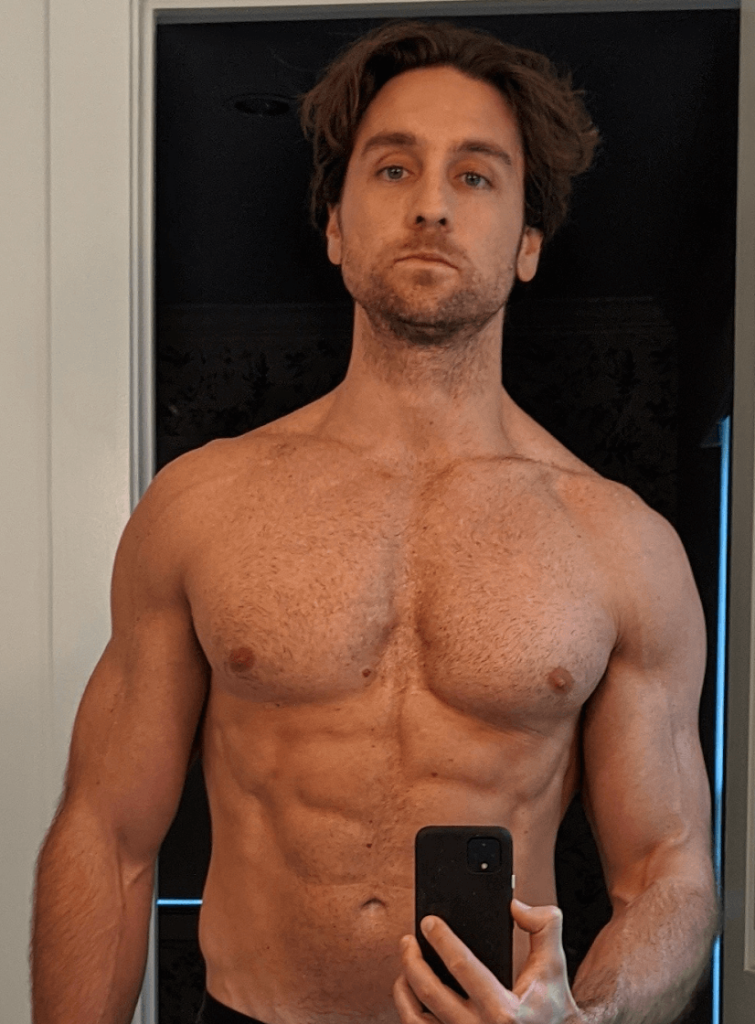I don’t do many “physique updates” because, well, there isn’t much to update.

6’2, 195-to-200 pounds, 8-to-10 percent body fat . . . until I leave my body to the worms and toads.
Why?
Because I’ve gained more or less all of the muscle I can ever gain, and I don’t want to pretend otherwise to make people think they can always get bigger and stronger.
Here’s the score:
- Guys can gain about 40-to-45 pounds of muscle in their lifetime if they have good genetics. If they don’t, their ceiling will be in the 30s. Women can cut those numbers in half.
- As muscle mass is a primary driver of strength, that too stalls out eventually. There’s more variation in potential strength than muscle gain, but a reasonable endpoint for men to strive toward is “3-4-5” one-rep-maxes—3 plates (on each side) on the bench (315 pounds), 4 on the squat (405 pounds), and 5 on the deadlift (495 pounds), and for women, 1-ish-2-ish-2-ish (135, 225-to-275, and 225-to-275 pounds) is doable for most.
- Guys and gals will gain, more or less, all the muscle and strength available to them in their first five years of high-quality training. And after that, nothing much will change regardless of what they do, short of getting on a chemical cocktail of anabolic #dedication.
Hence, the goo-roos who blather about how their physiques are decades in the making, and always improving by meaningful amounts, are ignorant, lying, or secretly using steroids.
In reality, what we’re seeing in these people is either five-ish years of productive work and a bunch of maintenance, or drugs that have enabled them to gain far more muscle and strength than they ever could’ve gotten naturally. Some of ’em are” tricksy little Hobbitses” too, using just enough drugs to keep the needle moving (“TRT”) without making it obvious.
Do yourself a solid, then, and immediately unfollow anyone who claims to have years of quality training behind them yet brags about some new diet or exercise trick that’s supposedly adding yet another pound (or three) of muscle to their jacked physiques, or plate (or three) to their impressive totals.
None of that means training has to become a dreary, pointless grind, however. It just means our goals and expectations need to evolve with our body. We have to learn to appreciate what we’ve got and find a deeper motivation to keep training than bigger biceps.
This can take many forms. It can be feeling more confident and competent inside and outside of the gym, being more productive at work, setting a good example for your kids, tackling new physical challenges like sports, hiking, biking, or running, avoiding disease and dysfunction, or slowing down the processes of aging and retaining a youthful vitality.
For me, it’s several things.
It’s doing workouts I enjoy that’ll allow me to stay in peak shape and health for the rest of my life, without pain or injury.
It’s keeping the spark alive in my marriage and helping my kids develop a positive relationship with food and exercise—lessons they can pass on to their kids, too.
It’s a matter of personal pride and responsibility, of physically expressing my values and worldview, of producing and presenting my best self.
These are privileges and prizes, not compromises or comedowns. Things to celebrate, not understate.










